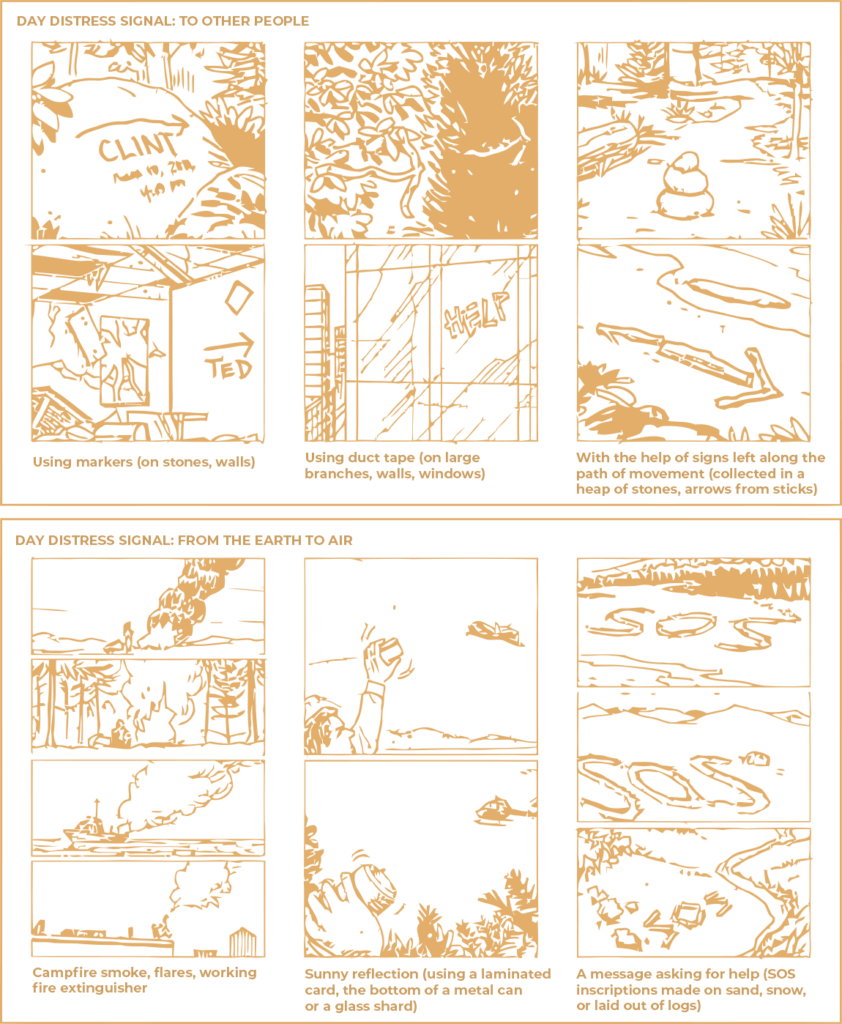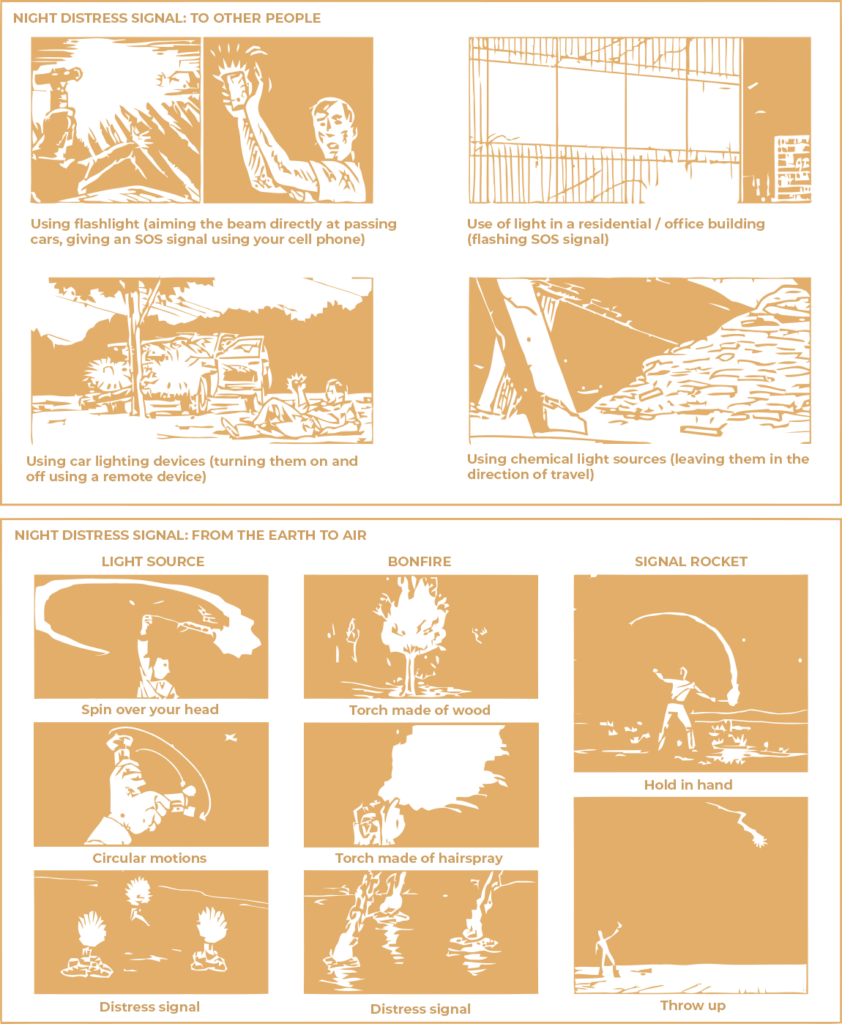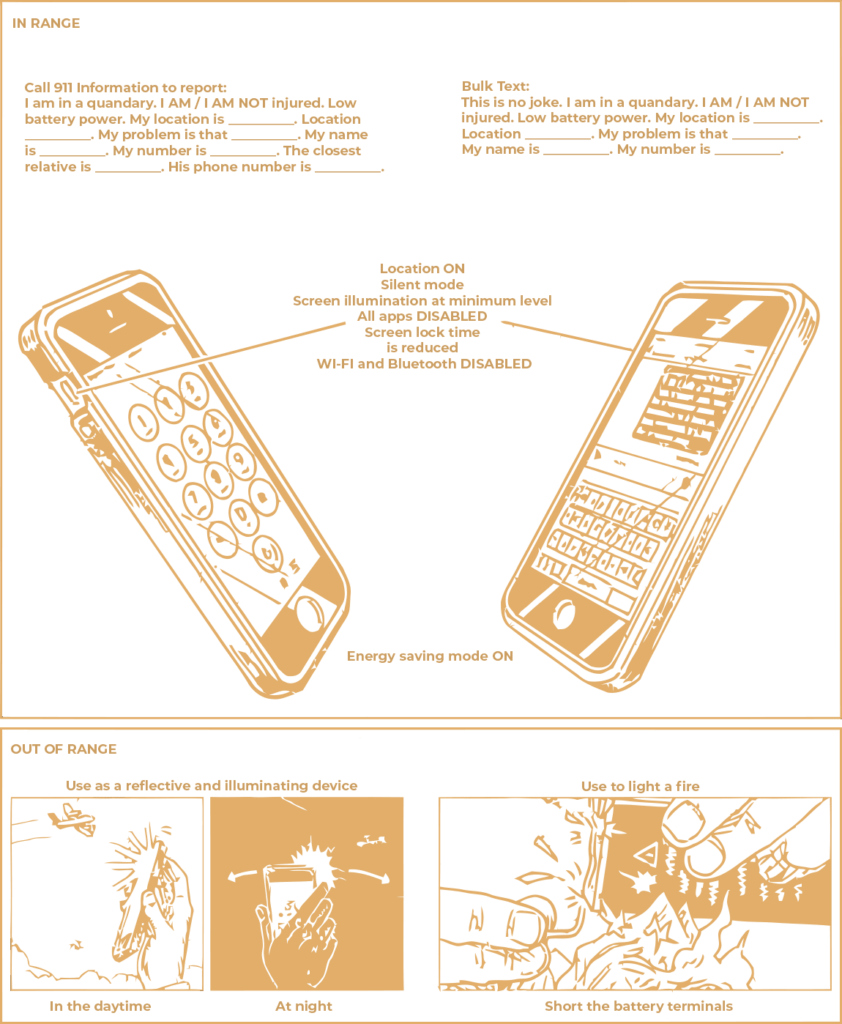SENDING DISTRESS SIGNALS
If you think that the distress signals written in the sand or scrawled on the rocks are something outdated, from adventure novels, then you are deeply mistaken. When modern technology does not work and opportunities are limited, such techniques are the only way to inform searchers or rescuers about yourself. And it doesn’t matter where exactly you are – in the city or in the deserted countryside. Your plan of action will depend primarily on methods of your search. If you are falling behind the group, or you know that a search and rescue team is likely to be sent to find you, leave physical trails to signal of yourself, which can be used to determine the direction of your movement. Use text messages with the date and time of writing. Every expedition backpack should be equipped with Sharpies markers and bright color duct tape that can be seen in the wild. If you are traveling light or find yourself in a difficult situation unexpectedly, you can make marking items from available tools. You can also take some of your clothing, urinate on it, and leave it for search dogs to find it.

Whether you resort to smoke, glare, or messages, distress signals designed to grab the attention of aircraft or ship crews need to be sufficiently visible. A large bonfire that burns during the day will draw attention more quickly if you add pine cones, rubber, or petroleum-based or plastic-based products to it. They will make the smoke plumes black, which is especially useful against the background of snow, on which white or gray smoke is much less visible. Take advantage of the reflectors made from the available tools.
Use a laminated ID card, the bottom of a metal can, or a shard of glass to direct the sunbeam toward a flying plane. This will attract the attention of the crew.
SOS distress signals in the form of very large letters written in the sand or snow should contrast with the environment. To do this, fill in the indentations of the letters with leaves, grass, stones, or other materials.
Distress signal at night
The need to send a distress signal at night can arise in a number of cases.
While an emergency is perceived as more alarming at night than during the day, you have one advantage – many options for signaling.
To send a signal from one person to another, you can shine a flashlight on a passing car, direct its beam into the windows of neighbors or towards a rescue team that has arrived at the scene. Turn on the automatic blinking mode, which will be perceived as an SOS signal. If the design of the flashlight does not imply such a possibility, turn it on and off yourself.
Pressing the emergency button in your car activates not only the alarm, but also the exterior lights of the car.
If you find yourself trapped in a public building during a power outage, unscrew a battery-operated emergency light from the wall and use it to send a signal through the window. Cover it briefly with your hand or a piece of paper to make it feel like a flashing SOS signal.
When sending a signal up from the ground, take care of its visibility from a long distance. To do this, you can rotate the flashlight over your head or direct the light towards the flying plane.
First, direct the beam at the plane, then show your location by directing the beam under your feet (if the flashlight allows it, make the beam wider, and then the illumination area will increase), then shine again towards the plane. With this alternation of beam directions, you can draw attention pilot, even if he is not specifically looking for you.

Bonfires or other light sources in the form of a triangle are a common distress signal. Install chemical light source or flashlights turn their beams pointing up. Bonfires are especially useful in the jungle, where dense vegetation makes it difficult to see from above the light of the working devices. In the tropics, the only areas above which the sky is not obstructed by trees or bushes are waterways. Therefore, it is best to use rafts to send distress signals at night, to which the switched on light sources are tied with a vine or rope.
Sending a distress signal using a smartphone
Modern means of communication not only allow you to access an inexhaustible source of entertainment, but also have at your disposal a modern personal security device. With just one press of a button, you can keep a small child occupied for a few hours and immediately call the emergency response team. However, this opportunity will be missed if your battery runs out before you make an urgent call.

To extend the battery life of your phone, turn on silent mode, turn off Wi-Fi and Bluetooth, adjust the screen brightness to minimum, and turn off all non-essential applications. In general settings, turn on the ability to determine your location so that law enforcement agencies can track you using your phone.
When communicating with emergency dispatchers, be specific, calm and clear. Although the 911 operators will not rush you to end the call quickly, provide information and answer their questions, calmly explain the need to conserve battery power.
If you do not know your coordinates or, for example, street names, provide visible landmarks, including the names of stores or offices, so that the dispatcher can more accurately determine where you are.
If the signal is too weak to make a call, send a text message.
Contacting the 911 service in this way is possible not everywhere, therefore, having made such an attempt, send the same text to all your relatives and friends.
Use the general template provided and be sure to ask for a text confirmation of receipt (not call!).
If the signal does not go through at all, use your phone to send a distress call with a sunbeam during the day or light signals at night. As a last resort, a non-working phone can be used to light a fire.






